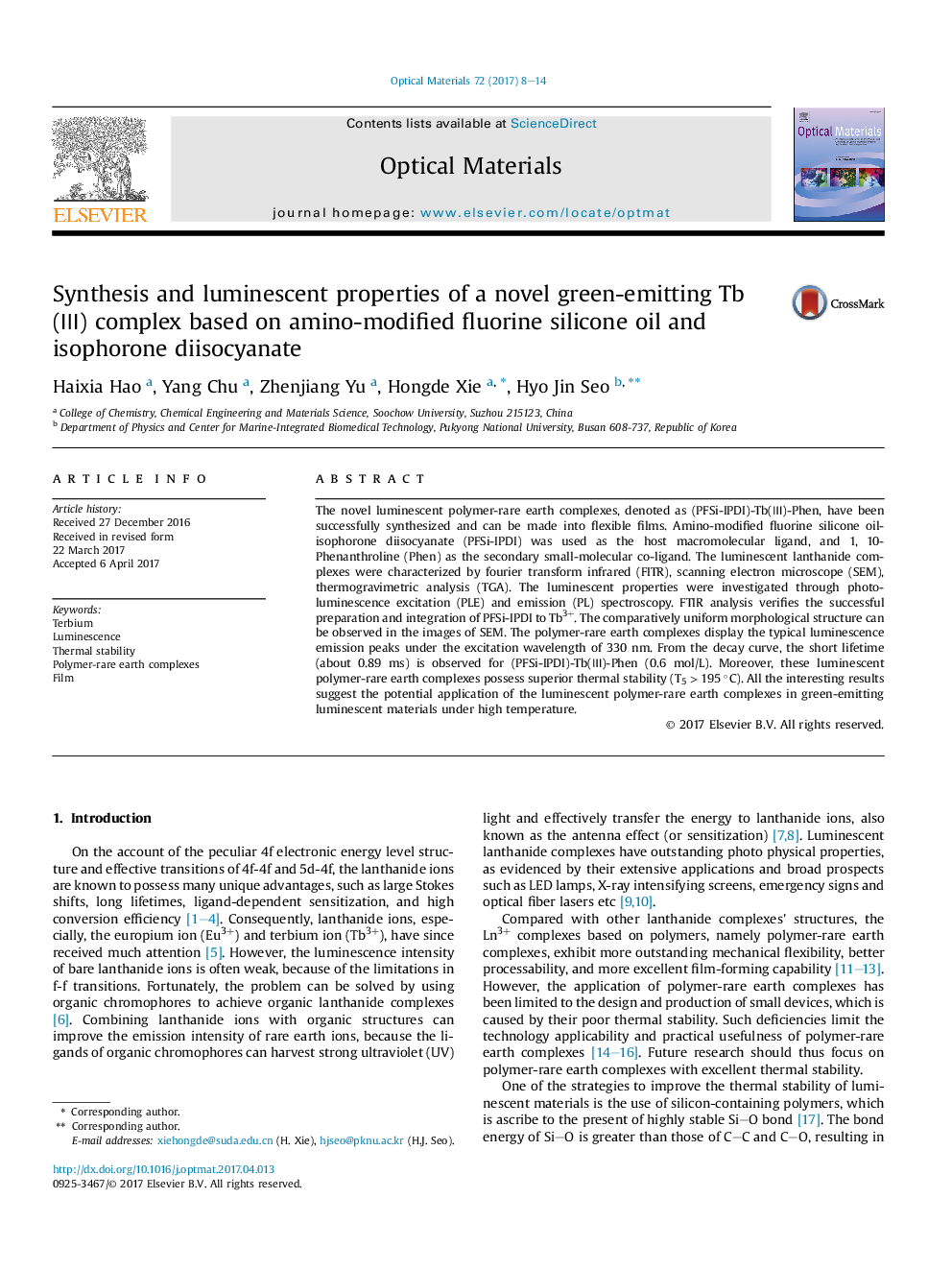| Article ID | Journal | Published Year | Pages | File Type |
|---|---|---|---|---|
| 5442431 | Optical Materials | 2017 | 7 Pages |
Abstract
The novel luminescent polymer-rare earth complexes, denoted as (PFSi-IPDI)-Tb(â
¢)-Phen, have been successfully synthesized and can be made into flexible films. Amino-modified fluorine silicone oil-isophorone diisocyanate (PFSi-IPDI) was used as the host macromolecular ligand, and 1, 10-Phenanthroline (Phen) as the secondary small-molecular co-ligand. The luminescent lanthanide complexes were characterized by fourier transform infrared (FITR), scanning electron microscope (SEM), thermogravimetric analysis (TGA). The luminescent properties were investigated through photoluminescence excitation (PLE) and emission (PL) spectroscopy. FTIR analysis verifies the successful preparation and integration of PFSi-IPDI to Tb3+. The comparatively uniform morphological structure can be observed in the images of SEM. The polymer-rare earth complexes display the typical luminescence emission peaks under the excitation wavelength of 330Â nm. From the decay curve, the short lifetime (about 0.89Â ms) is observed for (PFSi-IPDI)-Tb(â
¢)-Phen (0.6 mol/L). Moreover, these luminescent polymer-rare earth complexes possess superior thermal stability (T5 > 195 °C). All the interesting results suggest the potential application of the luminescent polymer-rare earth complexes in green-emitting luminescent materials under high temperature.
Related Topics
Physical Sciences and Engineering
Materials Science
Ceramics and Composites
Authors
Haixia Hao, Yang Chu, Zhenjiang Yu, Hongde Xie, Hyo Jin Seo,
